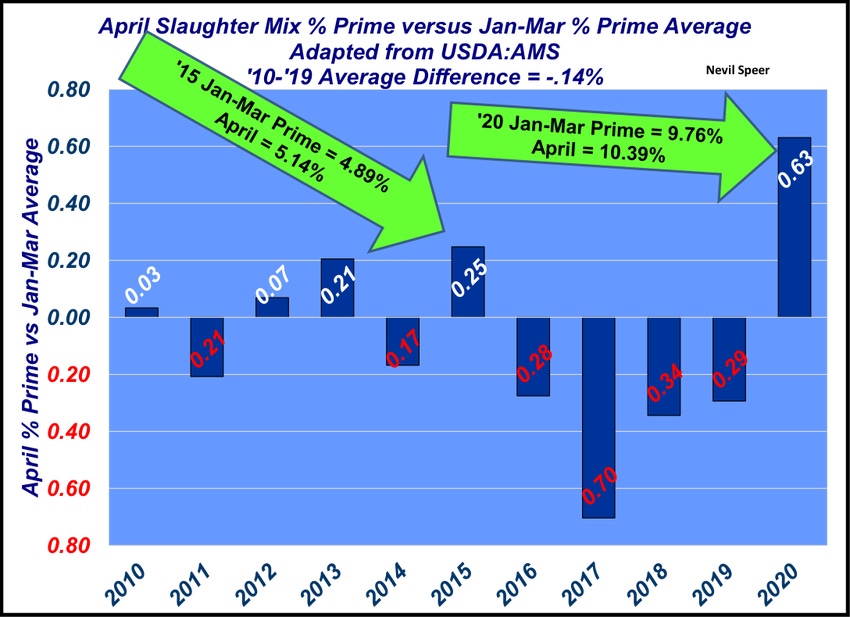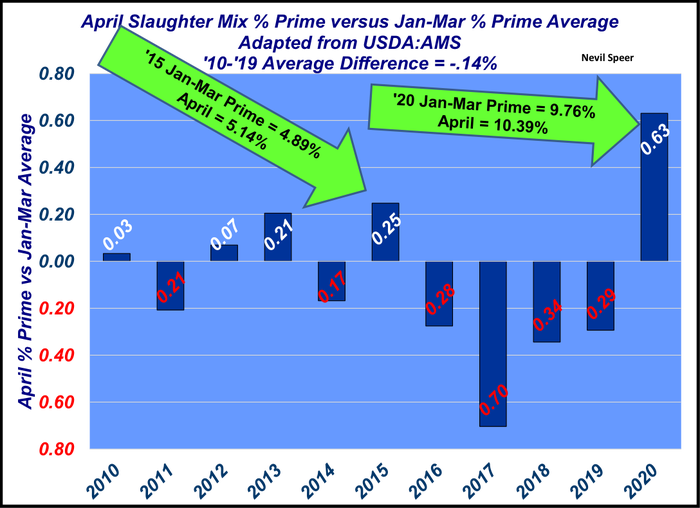As cattle backlog, quality improves
The slowdown in fed cattle going to town means beef quality is better.
May 14, 2020

Since late March, Industry At A Glance has focused on COVID-19 and its influence on the beef industry. Those discussions have covered an array of topics including feeder cattle shipments, importance of risk management, ethanol, and shifting value components within the cutout. Last week’s column highlighted the sharp slowdown in fed steer and heifer slaughter during April.
The column noted that, “Final numbers still aren’t tallied (actual slaughter numbers run on a two-week delayed reporting cycle from USDA), but the industry will obviously be in a sharp deficit. Clearly, that has huge implications even after we get up back and running full speed.” Meanwhile, the discussion also targeted some coverage around the slowdown’s impact on beef quality.
The slowdown in fed cattle going to town means the slaughter mix looks different. As slaughter capacity has been squeezed, the best cattle get marketing priority and commodity cattle generally get left behind. This week’s illustration depicts that reality. Three things are important:
The week ending May 2 (hence the last full week of April) saw an all-time record for cattle grading Prime at 11.29%.
That trend has largely been in play all month; April ’20 also established a new monthly record with 10.39% of cattle qualifying for the highest quality grade.
The difference between April and the first quarter of the year is record large – the jump was +0.63%; generally it goes the other way – grading percentages seasonally decline going into the second quarter.

With that, there are several key implications. First, the positive jump may help partially explain why the April ’20 Live Cattle contract expired with an unprecedented divergence from cash. The slaughter mix (cash market) was clearly higher quality than normal and thus maintained strong basis all the way through expiration. Second, carryover is increasingly comprised of commodity cattle. That’s going to make it even more difficult to eat through those once throughput returns to some normalcy in coming month(s).
Speer is based in Bowling Green, Ky. and serves as director of industry relations for Where Food Comes From (WFCF). The views and opinions expressed herein do not necessarily reflect those of WFCF or its shareholders. He can be reached at [email protected]. The opinions of the author are not necessarily those of beefmagazine.com or Farm Progress.
About the Author(s)
You May Also Like





